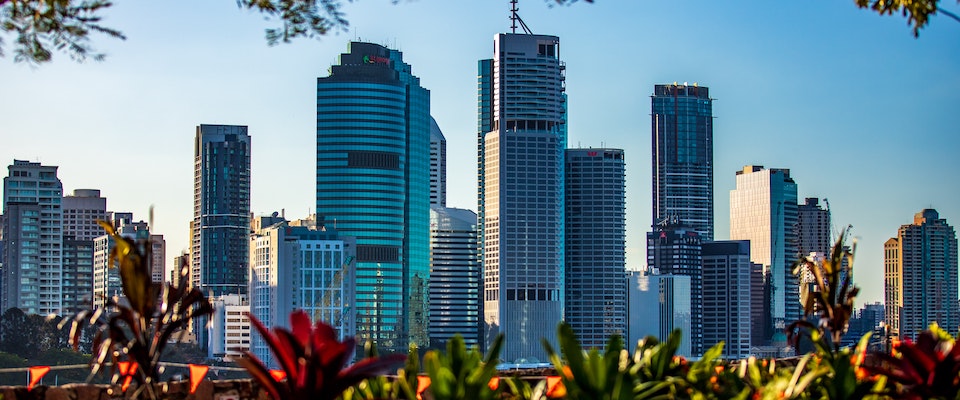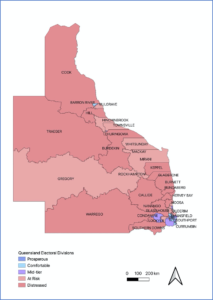
As the State election looms, the social and economic performance of Queensland electorates has been indexed by a Griffith University researcher in a new report, uncovering communities in economic distress.

Author Professor Scott Baum from Cities Research Institute and the Policy Innovation Hub used Australian Bureau of Statistics Census data and seven economic performance indicators to calculate a vitality score on the Index of Prosperity and Distress (PDI).
The PDI evaluates communities based on the proportion of the population with post-school qualifications, number of adults out of work, poverty rate, median income and rates of housing vacancy. Proportional changes in the number of jobs and businesses are also included.
"PDI identifies two groups politicians should pay attention to, the first is a group of electorates with high concentrations of economically distressed communities and another group of communities at risk.
"For the group of electorates with high levels of distress there is real danger that the communities within them will continue to fall behind the rest of the state even as proposed economic rebuilding and infrastructure projects take-off."

He says out of the 93 Queensland electorates examined by the report, regional areas outside the South East corner fell in to either the 'at risk' or 'distressed' category.
"On average these 'distressed' or 'at risk' electorates show poor performance in jobs growth, levels of income and prospects for education and employment. These electorates will be less able to bounce back from the current economic shock."
The Bundaberg electorate has the highest percentage of the population living in distressed communities followed by Nanango and Maryborough. The top three 'at risk' electorates are Townsville, Thuringoa and Redcliffe.
The top five most prosperous electorates are concentrated in South East Queensland: South Brisbane, Springwood, Moggill, Aspley and Stafford.
Professor Baum says the report highlights the failure of past policies to reinforce geographically exclusive economic growth, limiting the state's larger economic potential.
"One-size-fits-all polices and infrastructure promises will not necessarily help these communities. What is needed is approaches that really deliver for local communities and economies."
"Localised financial hardship brings a range of social problems that disadvantage communities over a longer term. How deep and long those impacts will be ongoing if these communities aren't prioritised in the current policy debate."
Top 5 Distressed Queensland electorates
- Bundaberg: 86.50% living in distressed communities. 13.50% living in at risk communities.
- Nanango: 66.80% living in distressed communities. 33.20% living in at risk communities.
- Maryborough: 51.85% living in distressed communities. 41.08% living in at risk communities.
- Hill: 61.30% living in distressed communities. 38.70% living in at risk communities.
- Southern Downs: 62.20% living in distressed communities. 24.80% living in at risk communities.
Top 5 Prosperous Queensland electorates
- South Brisbane*
- Springwood
- Moggill
- Aspley*
- Stafford






